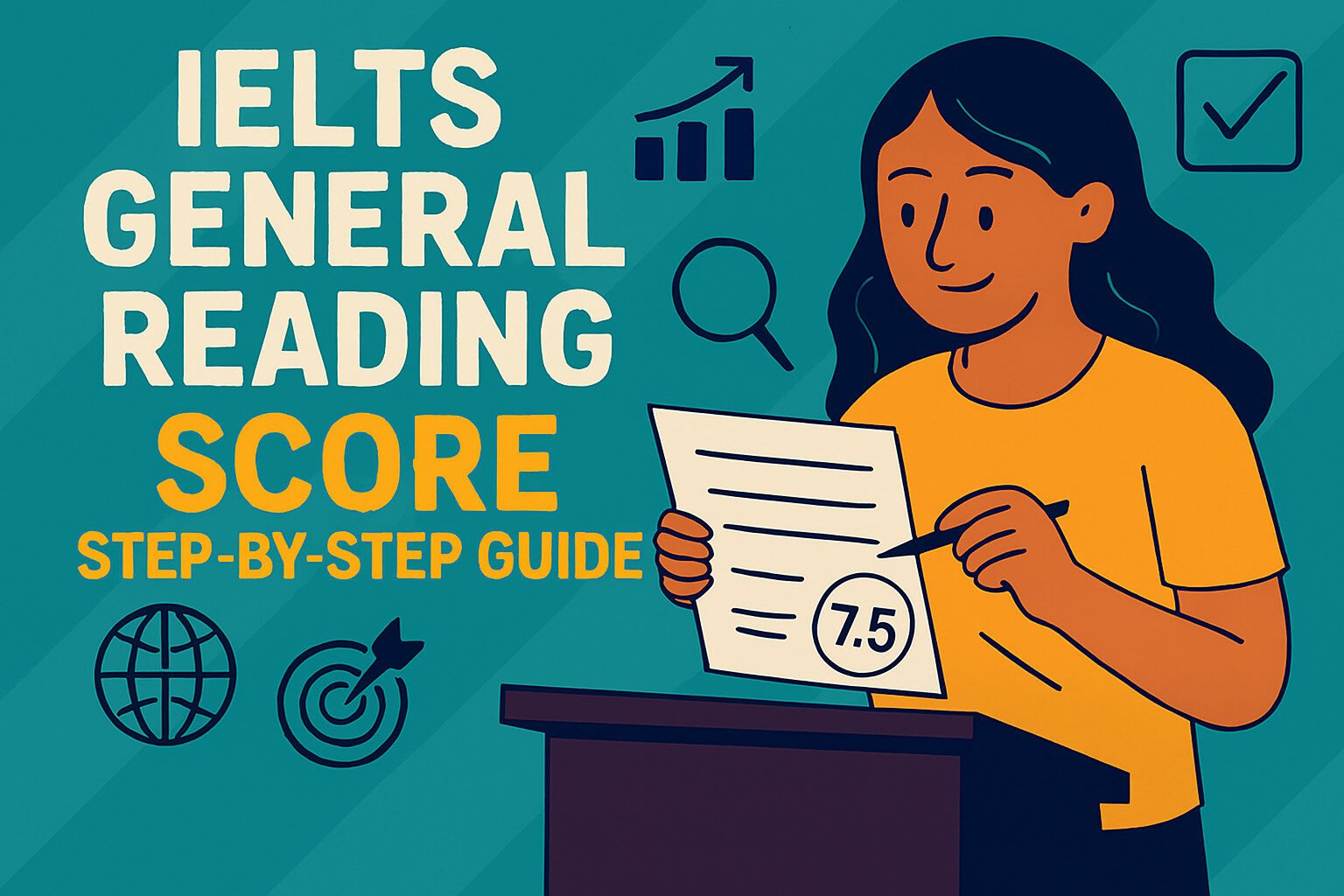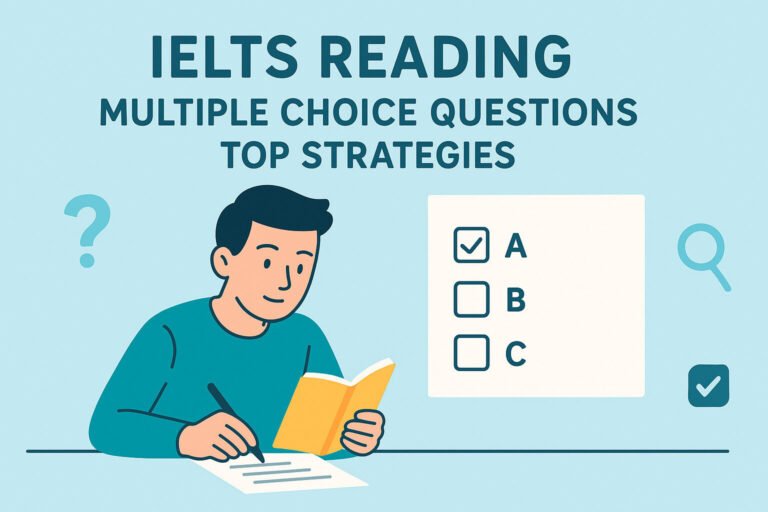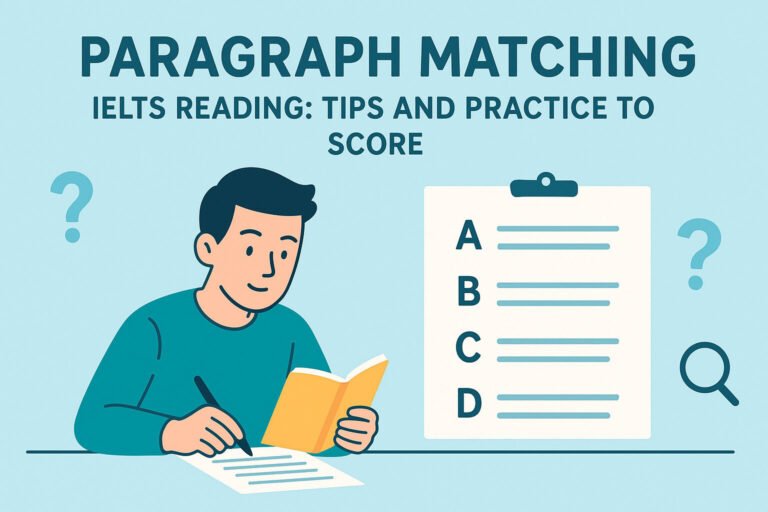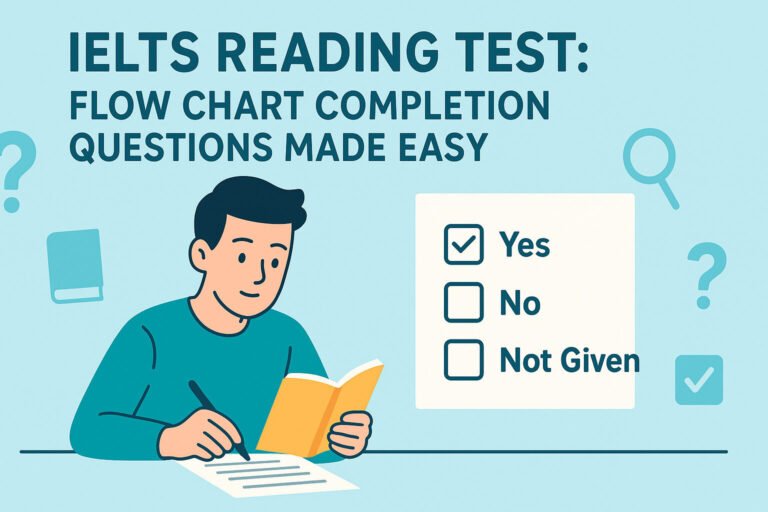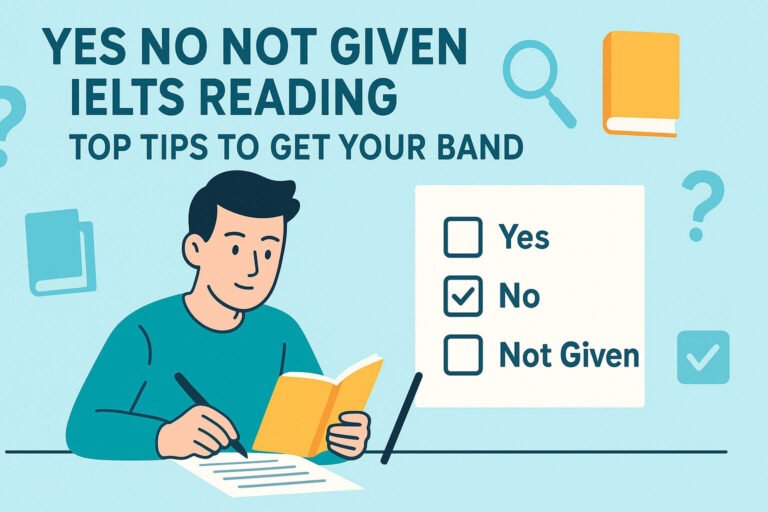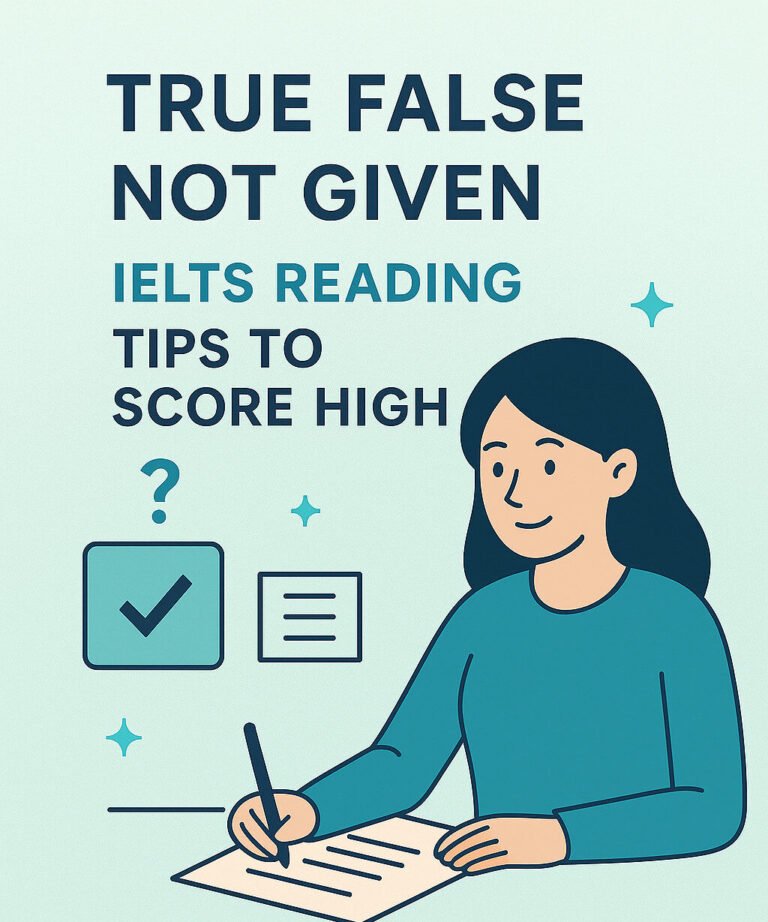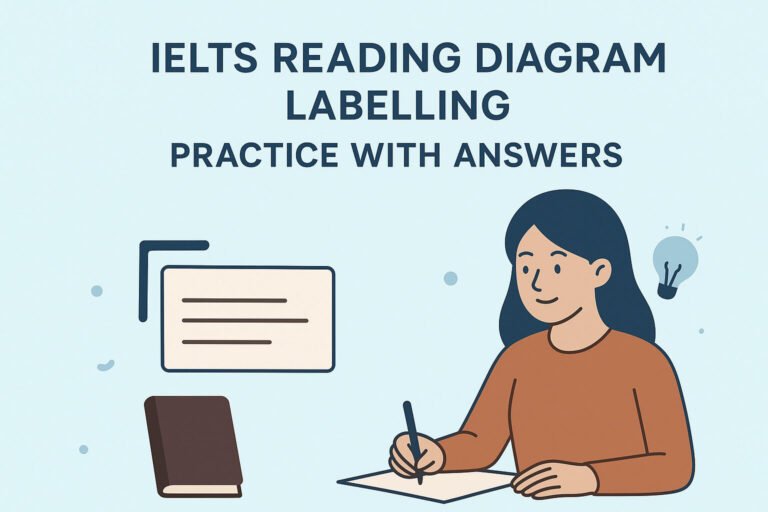Boost your IELTS general reading score with step by step guide, skimming, scanning, and tips. Master instructions, synonyms, and time limit—start practicing today!. Struggling to find answers in IELTS general reading passages? Many aspirants lose time on everyday texts like ads or articles, affecting their IELTS general reading score. This step by step guide will show you how to use skimming, scanning, and other strategies to tackle the test with confidence.
You’ll learn to follow instructions, read the questions first, understand question type and underline key words, skim and scan to find answers, look for synonyms and paraphrasing, spend 1 minute for each question, stick to time limit, and check spelling. Let’s get you ready to succeed!
Why IELTS General Reading is Important
IELTS general reading tests your ability to handle real-life English texts. It prepares you for work or migration in English-speaking countries. A good score shows you can read notices, ads, and guides easily.
For example, band 6 can help with visa requirements. Practice improves your speed and accuracy. Start with one passage daily to see gains.
Understanding the Test Structure
What to Expect
IELTS general reading has three sections with 40 questions. You have 60 minutes to answer. Texts come from books, magazines, or notices.
Section 1 has short texts on daily life. Section 2 focuses on work topics. Section 3 is a longer text on general interest.
This setup tests various skills. Preparation makes it less scary.
Scoring Basics
Your IELTS general reading score comes from correct answers. 30 out of 40 is around band 6.5. Aim for higher with practice.
Scores convert to bands 0-9. Check official charts for details. Track your progress to improve.
Step by Step Guide to IELTS General Reading
Read the Instructions Carefully
Always read instructions first. They tell you word limits or answer formats. Following them avoids silly mistakes.
For example, “No more than two words” means keep answers short. Action step: Highlight limits before starting.
Read the Questions First
Look at questions before the passage. This helps you know what to find. Understand question type like matching or multiple choice.
Underline key words in questions. Example: Underline “reasons” in “What are the reasons?” Action step: Number questions to stay organized.
Understand Question Type and Underline Key Words
Know the question type. Types include true/false, gap fill, or headings. Underline important parts to focus.
For instance, in true/false, look for exact matches. Action step: Practice one type per day.
Skim and Scan to Find Answers
Skim the text for main ideas. Read first and last sentences. Scan for specific details like numbers.
Skim and scan find answers fast. Example: Skim sees topic, scan finds “2020” for a date question. Action step: Time your skimming to 2 minutes.
Look for Synonyms and Paraphrasing
Questions use different words from the text. Look for synonyms like “big” for “large.” Paraphrasing hides answers.
Example: Question “happy” text says “joyful.” Action step: Make a synonym list from practice passages.
Spend 1 Minute for Each Question
Give 1 minute for each question. This keeps you on track. Stick to time limit of 60 minutes.
If stuck, guess and move on. Example: Skip a hard gap fill. Action step: Use a timer in practice.
Stick to Time Limit
The test is 60 minutes. Divide time: 20 minutes per section. Don’t spend too long on one part.
Example: Finish section 1 in 17 minutes. Action step: Practice full tests weekly.
Check Spelling at the End
Check spelling when transferring answers. Mistakes like “recieve” lose points. Double-check all words.
Example: “Environment” must be right. Action step: List common spelling errors to study.
Real Examples from IELTS General Reading
Example of Skimming and Scanning
Imagine a passage on travel tips. Question: “What is the best way to book?” Skim finds booking section. Scan spots “online” as answer.
Many miss this without scanning. Action step: Practice with a newspaper article.
Example of Synonyms and Paraphrasing
Question: “Why visit the city?” Text says “The town offers fun activities.” “Visit” paraphrases to “offers.”
This shows rewording in tests. Action step: Rewrite sentences using synonyms.
Useful Tips for IELTS General Reading
- Read the questions first to guide your reading.
- Understand question type and underline key words for focus.
- Skim and scan to find answers quickly.
Look for synonyms and paraphrasing in texts. Spend 1 minute for each question to stay on time. Stick to time limit to finish all sections.
Check spelling before ending. Example: Practice with timed passages. Action step: Review one test per week.
Avoid reading everything slowly. Don’t ignore instructions. Use a pencil for notes.
Table: Question Types and Strategies
| Question Type | Description | Strategy | Example |
|---|---|---|---|
| Multiple Choice | Choose best answer | Read options carefully | “What is the main idea?” |
| True/False/Not Given | Decide if info matches | Scan for exact words | “The city has parks.” |
| Gap Fill | Fill blanks | Look for context | “The train leaves at ____.” |
| Matching Headings | Link headings to paragraphs | Skim paragraphs | Match “History” to section. |
| Short Answer | Brief response | Use synonyms | “What is the cost?” |
This table helps you prepare for IELTS general reading.
FAQ: Common Questions on IELTS General Reading
How can I improve my IELTS general reading score?
Practice skimming and scanning daily. Read questions first. Look for synonyms to find answers.
What is a step by step guide to IELTS general reading?
Read instructions, questions first, skim, scan, and check spelling. Stick to time limit. Spend 1 minute per question.
Why is skimming important in IELTS general reading?
Skimming gives main ideas fast. It saves time for scanning. Practice with short texts.
How do I handle spelling in IELTS general reading?
Check answers at the end. Practice common words. Avoid rushing.
What if I don’t understand a question type?
Understand question type and underline key words. Practice different types. This helps find answers.
Why look for synonyms in IELTS general reading?
Questions reword text. Synonyms help match ideas. This boosts accuracy.
Final Thoughts
IELTS general reading can be easy with the right approach. Use this step by step guide to boost your IELTS general reading score. Keep practicing skimming, scanning, and time management.
For more tips, visit IELTSNest.com. Good luck!

